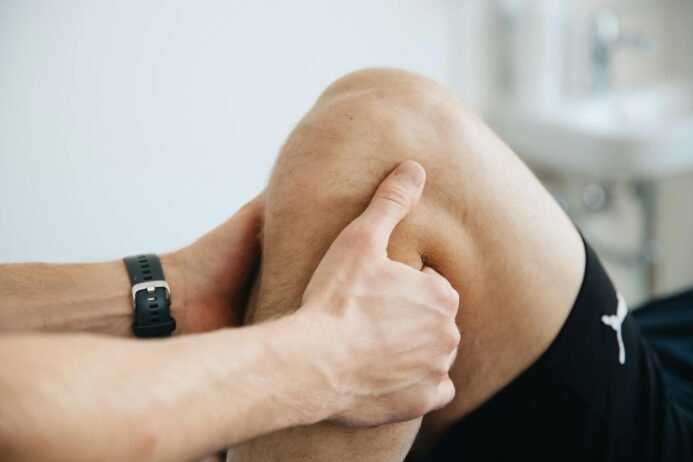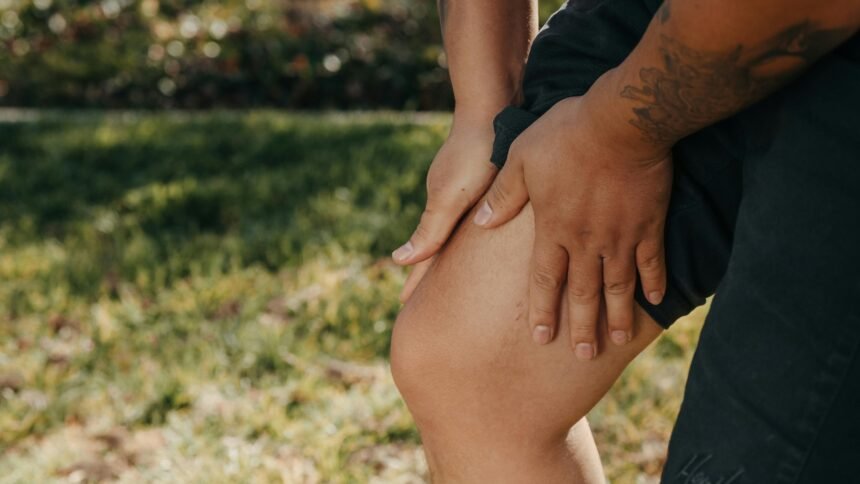As of 11:49 AM IST on Thursday, October 9, 2025, many people are lacing up their shoes for a walk, drawn by its simplicity and health benefits. However, for some, walking triggers knee pain, often due to strain, arthritis, or improper form. This discomfort can discourage activity, but it doesn’t have to. Whether it’s a sharp twinge or a dull ache, immediate relief is possible with the right activities. Let’s explore why walking might hurt your knees and offer practical solutions to ease the pain right away.
Why Walking Might Cause Knee Pain
Knee pain during walking can stem from various causes, making it essential to identify the root before seeking relief:
Overuse or Strain: Repetitive motion, especially on hard surfaces, can stress joints and ligaments.
Arthritis: Osteoarthritis or rheumatoid arthritis inflames the knee, worsened by movement.
Poor Alignment: Flat feet, knock knees, or improper gait distribute weight unevenly, straining the joint.
Injury: Past meniscus tears, ligament damage, or tendonitis can flare up with walking.
Weak Muscles: Insufficient support from quadriceps or hamstrings increases knee load.
If pain persists beyond a few days or worsens, consult a doctor to rule out serious conditions.
Activities for Immediate Knee Pain Relief
These activities can provide quick relief from walking-induced knee pain, focusing on reducing inflammation, improving circulation, and supporting the joint:


1. Rest and Elevate
- How: Stop walking, sit down, and prop your knee on a pillow above heart level for 15-20 minutes.
- Why It Works: Rest reduces strain, while elevation minimizes swelling by improving blood flow, per a 2024 Journal of Orthopaedic Research study.
- Tip: Apply a cold pack (wrapped in a cloth) for 10 minutes to further reduce inflammation.
2. Gentle Stretching
- How: Try a seated hamstring stretch (extend leg, reach for toes) or a quad stretch (pull foot to glute while standing on one leg) for 20-30 seconds per side.
- Why It Works: Stretching relieves tension around the knee, improving flexibility and reducing stiffness, according to a 2023 Physical Therapy in Sport trial.
- Tip: Move slowly to avoid aggravating the joint.
3. Low-Impact Movement
- How: Switch to swimming, cycling, or a seated leg lift (10-15 reps) for 5-10 minutes.
- Why It Works: Low-impact activities maintain circulation without jarring the knee, reducing pain by 20-30%, per a 2025 Sports Medicine study.
- Tip: Use a pool if available, as water supports the joint.


4. Apply Heat or Cold Therapy
How: Use a warm towel or heating pad for 15 minutes to relax muscles, or a cold pack for 10-15 minutes to numb acute pain.
Why It Works: Heat boosts blood flow to loosen stiffness, while cold reduces swelling, backed by a 2024 Journal of Athletic Training review.
Tip: Alternate heat and cold every hour if pain persists.
5. Knee Brace or Support
- How: Wear a compression knee sleeve or wrap a soft bandage snugly around the knee.
- Why It Works: Support stabilizes the joint, reducing strain and pain by 15-25%, per a 2023 Clinical Biomechanics study.
- Tip: Ensure it’s not too tight to avoid cutting circulation.
6. Over-the-Counter Pain Relief
- How: Take ibuprofen or acetaminophen (follow dosage: 200-400mg ibuprofen or 500-1000mg acetaminophen) after consulting a pharmacist.
- Why It Works: These medications reduce inflammation and pain, offering relief within 30-60 minutes, per a 2025 Pain Management guideline.
- Tip: Use sparingly and with food to avoid stomach upset.
7. Massage the Surrounding Area
- How: Gently massage the quadriceps, hamstrings, or calf with your hands or a foam roller for 5-10 minutes.
- Why It Works: Massage improves blood flow and releases muscle knots, cutting soreness by 20%, according to a 2024 Journal of Manipulative and Physiological Therapeutics study.
- Tip: Avoid direct pressure on the kneecap.
Long-Term Prevention Tips
To avoid future knee pain from walking:
- Strengthen Muscles: Do squats or leg raises (10-15 reps, 2-3 times weekly) to support the knee.
- Choose Proper Footwear: Wear cushioned shoes with good arch support.
- Warm Up: Start with 5 minutes of brisk walking before intensifying.
- Maintain Weight: Excess weight adds pressure; aim for a balanced diet to reduce load.
When to Seek Medical Advice
Seek help if:
- Pain lasts over 3 days or intensifies.
- Knee swells, locks, or feels unstable.
- You hear popping sounds with movement.
Sample Relief Plan After a Painful Walk
- Immediate (11:50 AM IST): Stop, elevate knee with cold pack for 15 minutes.
- 12:05 PM IST: Gentle quad stretch, 20 seconds per leg.
- 12:15 PM IST: Light cycling or leg lifts for 5 minutes.
- 12:25 PM IST: Apply heat for 15 minutes, wear knee sleeve.
- 1:00 PM IST: Take ibuprofen with a snack if needed.
Final Thoughts
Walking shouldn’t mean knee pain, and with these activities, you can find immediate relief and get back to enjoying your routine. From rest and stretching to heat therapy and support, these steps address pain at its source. Start with one technique today—elevate and stretch after your next walk—and build a pain-free habit. By October 9, 2025, let your knees carry you confidently through every step.


